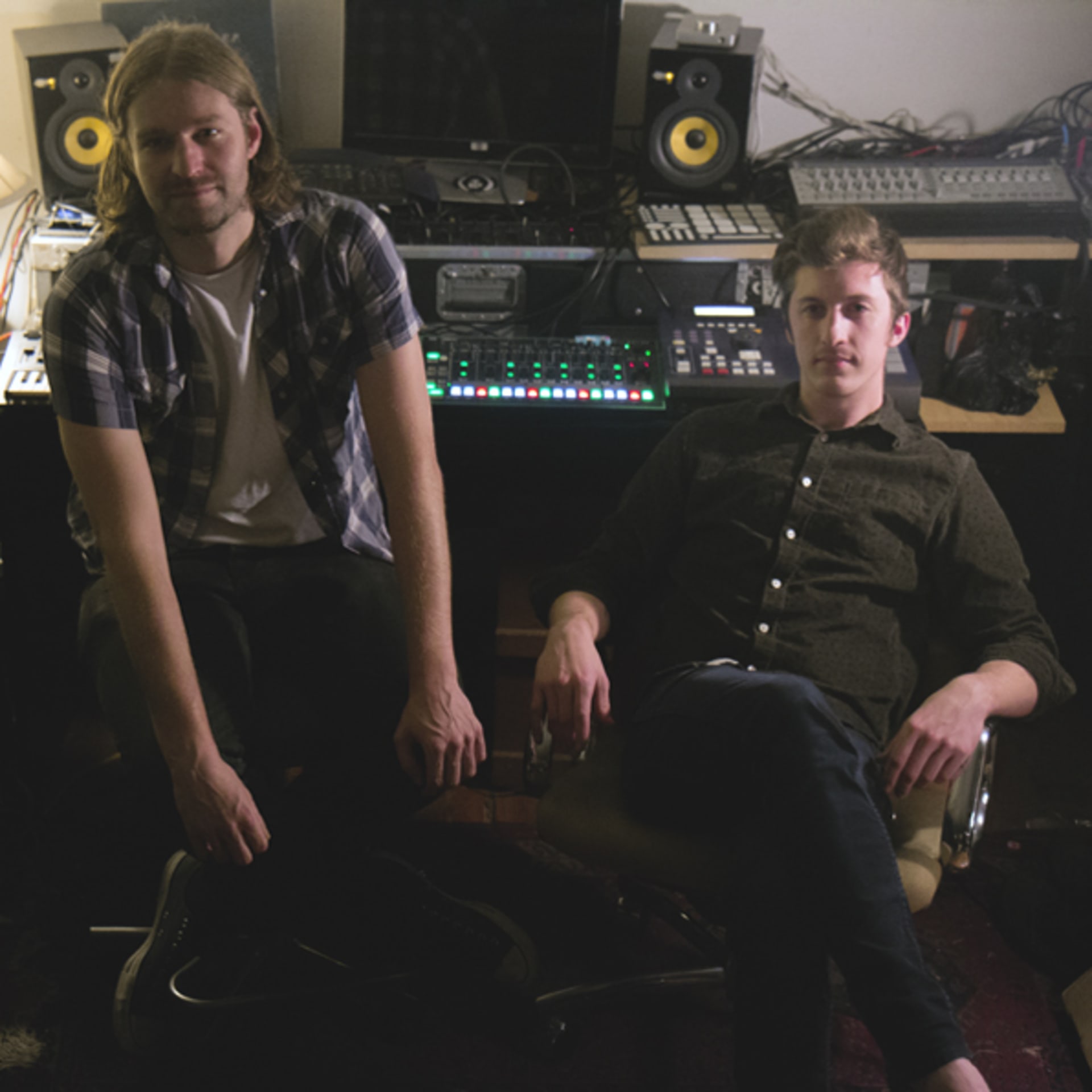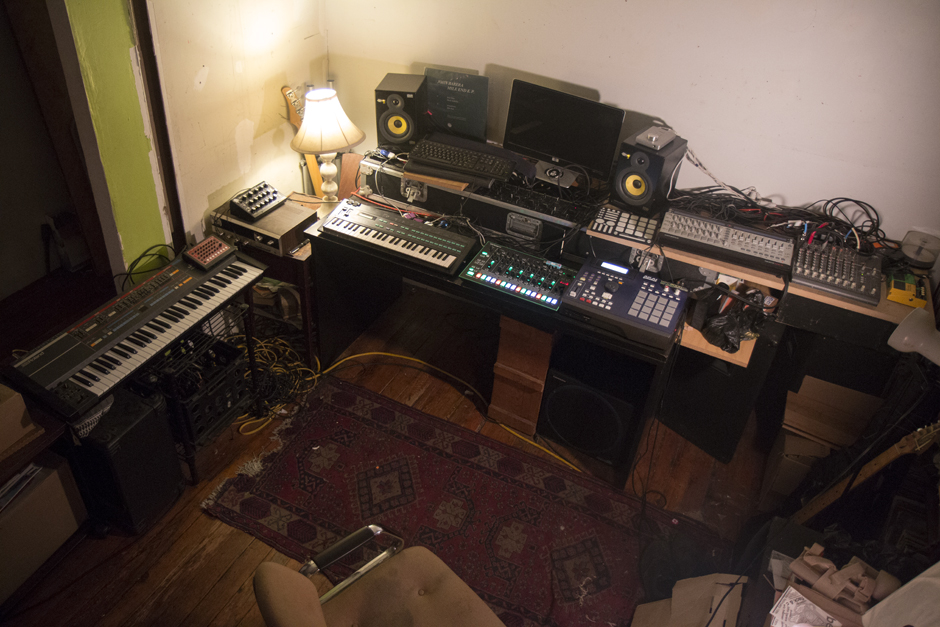
John Barera & Will Martin—“My whole life is trial and error.”
In house music, there’s a fine line between a track feeling fresh or seeming stale. The building blocks of the genre have barely changed for almost 30 years, so crafting infectious grooves requires a fine balance of expression and restraint, and a whole lot of trial and error. You can hear this balance on John Barera and Will Martin’s forthcoming LP, Graceless, which is available soon on Dolly, the label run by longtime Panorama Bar resident Steffi. We talked to the Boston-based duo about the challenges of tasteful sampling, juggling musicality and functionality, and why breaking new ground isn’t all its cracked up to be.
Crafty arrangement and sample selection are at the core of your productions. How much of this process is trial and error? Are you ripping records based on instinct, or have you gotten to a stage where you know what you need from a sample, where to find it, and how to chop it up?
JB: Man, my whole life is trial and error—it’s a big part of my process. If there’s anything I have to offer, it’s that I won’t give up, and I’ll keep trying until something sticks.
WM: We both listen to a lot of music throughout the day, and it seems like sampling records is a jumping point for the creativity that follows to make music.
JB: Exactly. We spend a lot of time listening to a variety of music, and in the back of my head, I’m thinking, “Okay, I might be able to loop that melody or break.” I’m a big fan of tasteful sampling and trying to respectfully recreate and rebuild a track. When checking to see if a sample might be something we could work with, we will start trying it out and I’ll know right away if it’s is a failure—or we’ll hone in on some special loops, and know right away that something dope is happening.
Do you tend to mix and match samples from multiple sources? Or is it important to limit your samples to a single source in order to build the most organic sense of acoustic space possible?
JB: Really simple, tasteful sampling is important, so we do limit samples to a single source almost always.
WM: There are couple things that we have combined samples on, using two tracks from the same record, but that decision was made in the moment. Generally, we find one sample that works and go straight to the drum machines and synths.
Despite being structured in a track-y manner, your new record certainly has a performative edge to it. How do you go about balancing your instinct for hands-on expression with the restraints imposed by the dance floor?
JB: We keep the dance floor in mind with all our arrangements, but everything we do has to have that human touch. Playing music is very important to the way we produce. Being able to sit down with an instrument that you can touch and feel tends to bring out the best music we create. As opposed to writing in stuff with a pencil in Ableton, we sit down at the synth and say to each other, “How does this riff sound? You want to try playing a take?” A lot of our tracks start as jams, and then we hone it down into what ends up being tight and build from that.
What do you guys think about artistic personality in dancefloor music? There’s a common assumption that personal expression is vital to the value of most artistic endeavors, yet a lot of dance floor music seems to be about rendering your personality subservient to an aesthetic, to disappear behind the music. Do you have any opinions on how these extremes can be reconciled? Or is it more a matter of saying screw you to those who don’t understand the artistic value of functionality?
JB: I want to stand in front of the music, for sure.
WM: I think that in a lot of the best dance floor music, the person producing it comes through in the track—you can hear the person that’s producing it putting something real into it, love and emotion. We want to make music that comes from real emotion—joyful tunes, aggressive tunes. That’s the kind of stuff that translates on the dance floor and people can make a connection with. Personal expression is probably the most important thing in music—any kind of music—and that’s what we want to put forth. Art is all about personal expression, right? At least, the good stuff is. At the end of the day, all we’re trying to do is make tracks that feel close and personal and intimate to us.

On that note, what is the artistic value of functionality?
WM: Making a track for the club can be cool, because it gives you limitations. It’s like blues or haikus, anything that has a rubric. You have to do something really interesting to stand out.
JB: I think some artists struggle with functionality and wiggle around it, but I want to embrace it while still being creative.
How does one go about breaking new ground in sample-orientated house music? Is it an artists’ responsibility to push musical formats, or is the concept of artistic drive more complicated than merely focusing on the “new”?
JB: By taking a sample as a jumping off point, beating the shit out of it, adding Rhodes, vocals and stuff—look at Moodyman, he does stuff like that, and he’s breaking new ground though his music. Also, Dilla raised the bar with what you can do with sample-based music. He takes a little sample and twists it into the most amazing groove. I don’t think anyone necessarily breaks new ground on purpose.
WM: I don’t know if you can intentionally go about breaking new ground. You just show up, put your head down, and keep hammering away until you make the kind of stuff you want to be making. Dilla did that, and his music changed the way people think about hip-hop—but really, we’re not trying to change anything. We just want to keep our heads down and keep hammering away at music until the stuff that comes out is the kind of stuff that we like, which has been happening recently.
Do you guys feel like you’ve reached a point where your abilities are in sync with your taste? Are there still musical gestures that you reach toward but can’t quite perform?
WM There’s a really good piece by Ira Glass where he talks about a person’s abilities reaching the level of their tastes, and how there’s this gap of time when you’re working and working but your shit just isn’t there yet. I think that we’re just coming to the end of that gap and starting to produce tunes that both of us can be really proud of, and can go back to without being too sick of them. We’ve just come to a place where we’re starting to get really happy with the music, so there’s definitely a ton of room for growth.
Published October 01, 2014. Words by marksmith.
